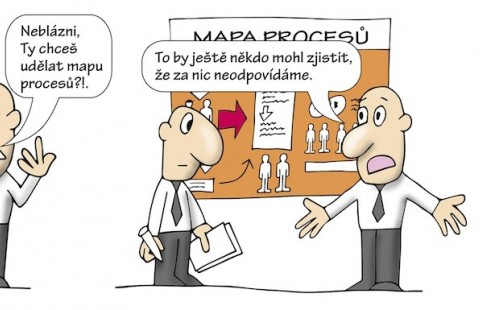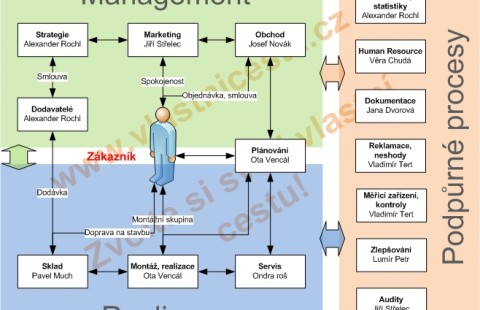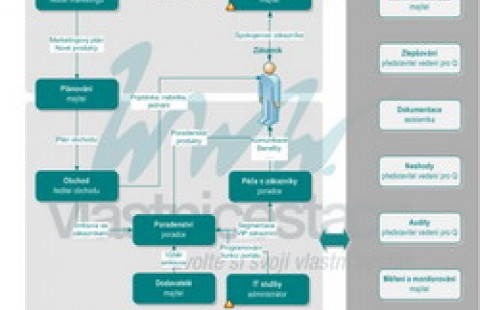Before sport activity we take it for granted, prepare the body for physical exercise, so that we do not cause injury. Similarly, we should carefully approach to communication and negotiation, in which the preparation stage often underestimate. Well-prepared preparation will not only guarantee us a better starting position, but ultimately can decide the question of success or failure of negotiations or presentation. The paper thus offers individual steps how to manage this “pre-start” phase of communication.
1. Clarify the topic and prepare the facts
In the first step of communication preparation we set ourselves a communication theme. What we want to tell others. A topic that should be interesting or important for the audience. We collect all relevant facts about the topic. But with the good old saying "to the third of all the good" we are not enough here. We can consider sufficient preparation of facts only at the moment when we are able to clearly identify at least 5 or more information, facts relevant to the topic of our communication. It is quite common to have 15. Facts have a very serious impact on the outcome of communication. The following applies:
The situation changes with every new fact.
With every new fact, the result or solution can change.
It is so. Newfound reality at the same time opens up alternative ways of solving the problem and knowledge bases wider leeway for communication or negotiation. If you are satisfied with less facts, we run the risk of failure in the subsequent communication. Just imagine when you hear from the listener ”..but it wasn't like that. The customer sent this request only after commissioning… ”.
Information collected at the end of the first step is confronting the place of objective reality and actually make sure that does not confuse facts with their own assumptions. That is, we do not interpret the facts purposefully so that they are directed towards our goal.
2. Characteristics of the target group (listener)
It is also essential to recognize "with whom we're dealing with." In other words, we must clearly identify the target group of communication, sometimes even an individual member of the group. We can identify the target group or person using three attributes.
- NEEDS - needs mean the inevitable duties that a person must fulfill in order to fulfill his / her corporate or social role. Therefore, already in the preparation phase, we need to be concerned about the needs of the other party and not to overlook them. The needs correspond to imaginary limits that the person concerned does not exceed. Example - management needs are eg fulfillment of company strategy, profit, no work injuries,…
- INTERESTS - we determine with which interest the other party enters the communication. Interests are motives behind the person's actions. They answer the questions why the counterparty wants to achieve something by acting. The better we understand the hidden interests of communication participants, the better we will achieve our own goals. However, it should be noted that the interests of the target group do not necessarily coincide with the personal interests of the individual, even if he or she is acting outside the group. Examples of interests for the management group are - no worries about the start of production, getting quick answers to any question, being informed about every detail of new product development,…
- STYLE - it is how the target group acts, acts and presents itself inside and outside its community. At what style they feel good or even better it is able to accept new information. Given the characteristics associated with the community, we can assume a certain way of conducting negotiations. However, when the interview is actually conducted, expectations about the counterparty's style may not be met. As a result, it is necessary to adapt the style of communication used accordingly to the partner so that he can clearly and comprehensibly hear what we need to tell him about our goal. Example - management has no time and so its required style can be - max 1 A4 information, no foreign words, suggestions that I can copy and use immediately,…

The Real | Interim Manager for Your Changes

Manager work model

Time management - making use of time effectively

Jak správně tvořit mapu procesů

Modelling and setting the processes and procedures - ISO 9001

Training - preparation of the SWOT analysis and strategy

Company Management System of Quality Step by Step - ISO 9001

Process map acc ISO 9001 - business offer

IT staff communication
3. You have preparation, create a point scenario
 The final step of the preparation is “visualization of the communication itself”. It is necessary to create a point scenario on the basis of which we want the communication to take place. In fact, you are building a communication line to guide the audience to understand your topic. The communication line must be arranged with regard to the topic and characteristics of the target group. Build what information you communicate first, second, and third. Sequence plays a big role in understanding your topic. Write down the steps with keywords only and try to shuffle the order. If nothing changes and the result should remain the same, the order does not matter. Unfortunately, in practice it often happens that if you change the order, the entire communication line will stop working. Example. Imagine that you are a service station and have exceeded the proposed repair budget by 10%. As a first piece of information you tell the customer 1 - you will pay CZK 22,000 for the repair instead of the planned CZK 20,000. As a second information you provide 2 - by law we have the right to increase the price of repair by 10% without informing you. Try to change information, rephrase and what is the result?
The final step of the preparation is “visualization of the communication itself”. It is necessary to create a point scenario on the basis of which we want the communication to take place. In fact, you are building a communication line to guide the audience to understand your topic. The communication line must be arranged with regard to the topic and characteristics of the target group. Build what information you communicate first, second, and third. Sequence plays a big role in understanding your topic. Write down the steps with keywords only and try to shuffle the order. If nothing changes and the result should remain the same, the order does not matter. Unfortunately, in practice it often happens that if you change the order, the entire communication line will stop working. Example. Imagine that you are a service station and have exceeded the proposed repair budget by 10%. As a first piece of information you tell the customer 1 - you will pay CZK 22,000 for the repair instead of the planned CZK 20,000. As a second information you provide 2 - by law we have the right to increase the price of repair by 10% without informing you. Try to change information, rephrase and what is the result?
In conclusion, believe that communication is particularly true - “Success is 90% preparation!”
|
Communication for managers - knowledge lines
Are you interested in learning to communicate correctly, engage, and inspire employees? Study the knowledge line "Communication for managers". If you are a subscriber to receive Newsletter, ask for a discount from Jiří Střelec.
|
|---|



